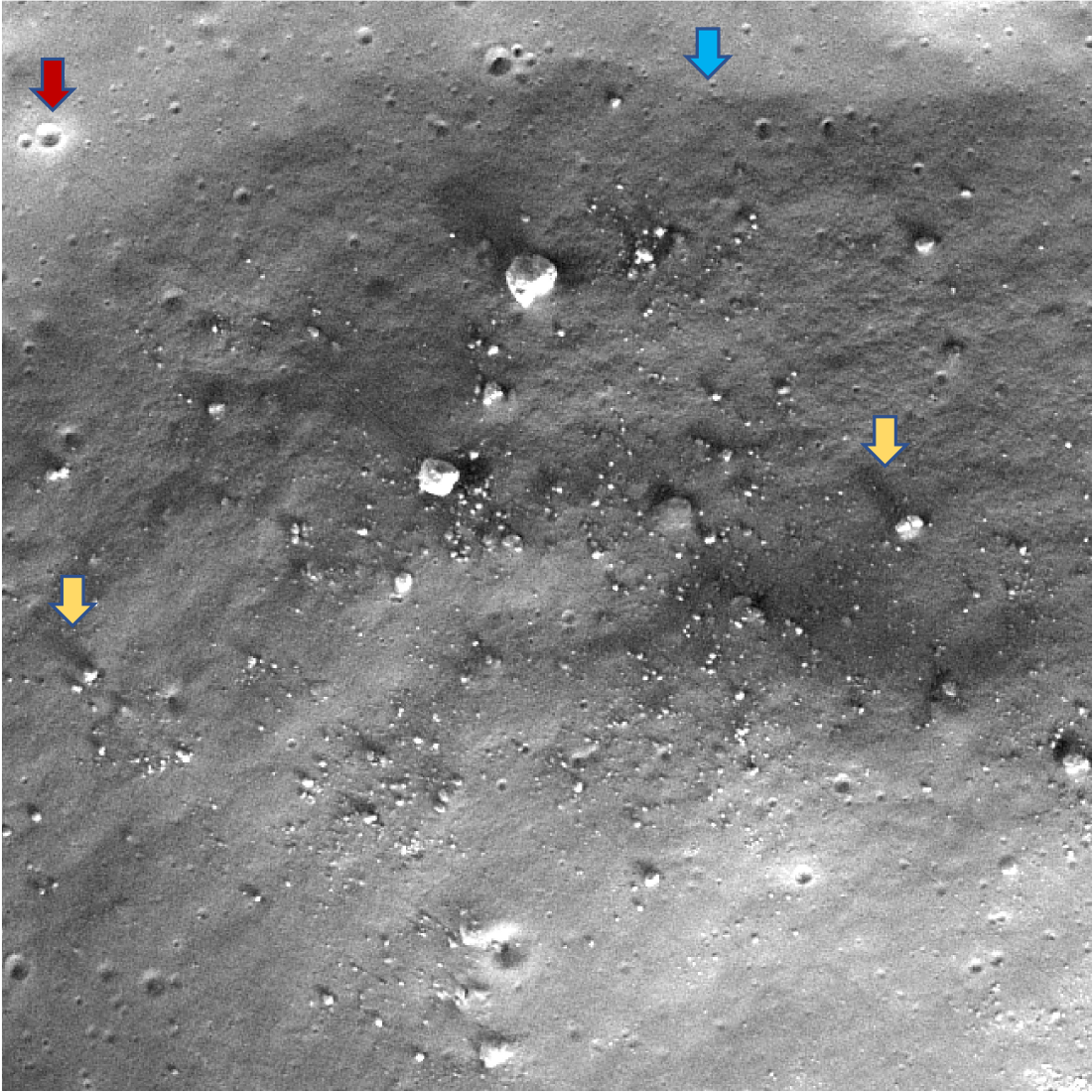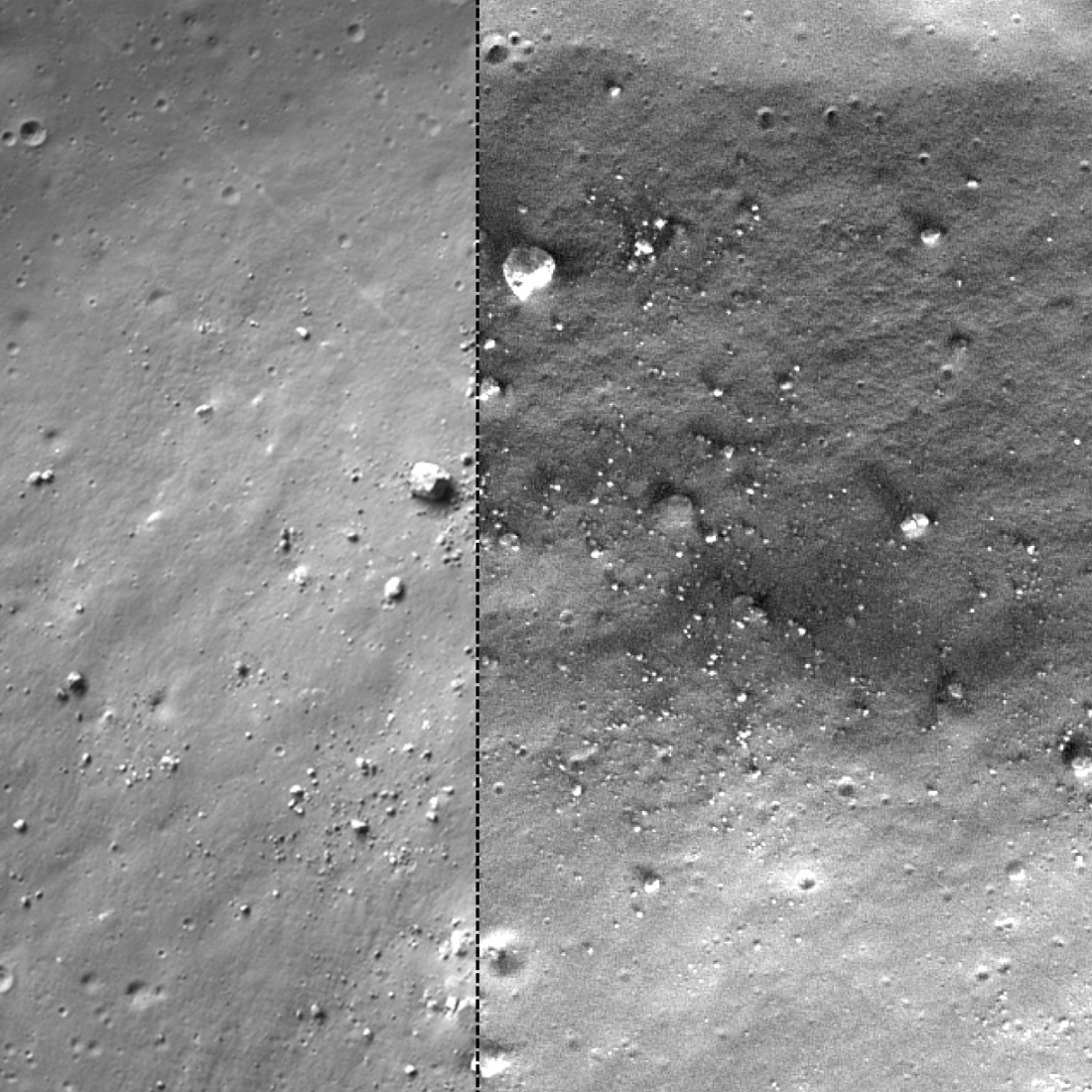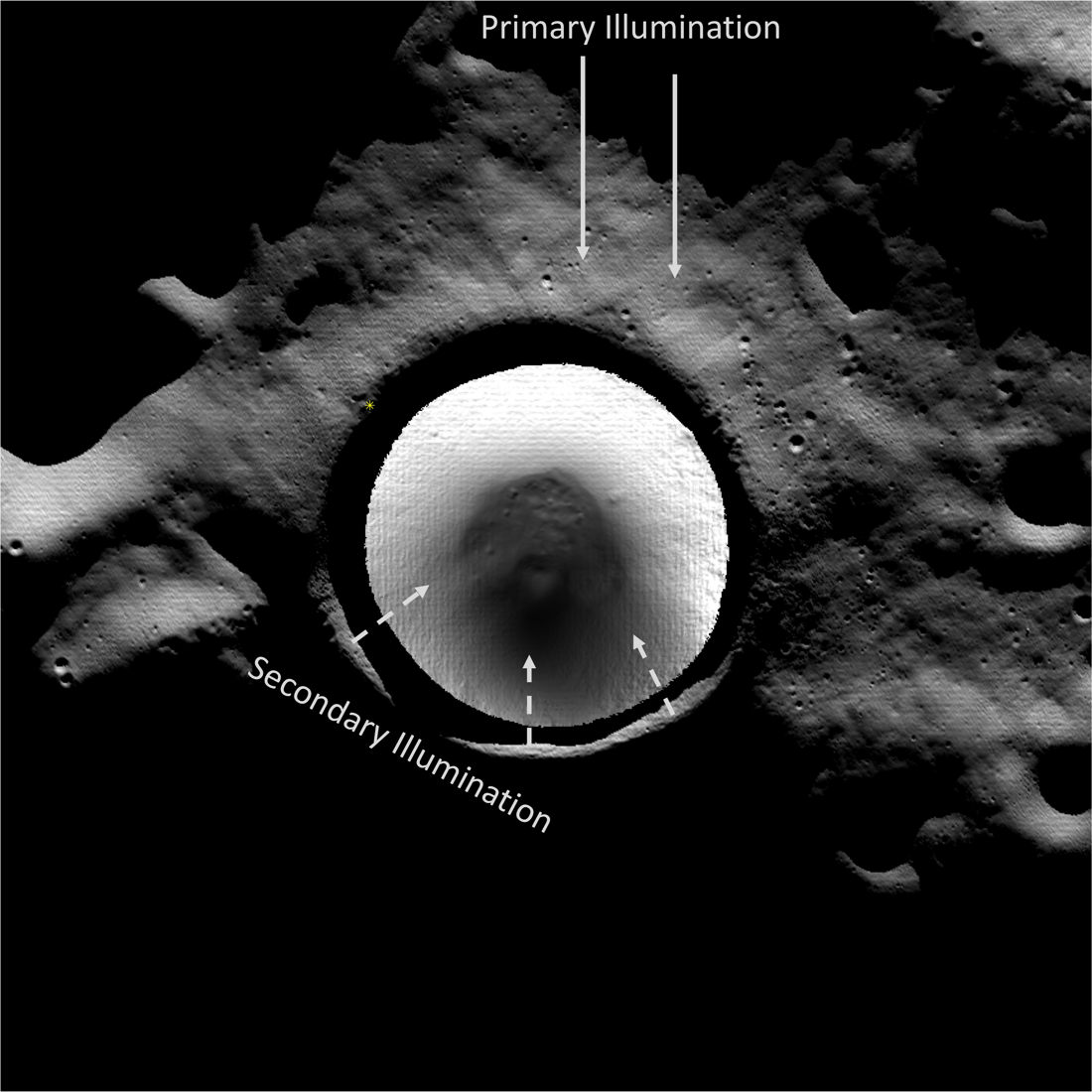
Complicated Lighting

Colorful arrows point out contrast boundaries. The red arrow shows a location where an impact crater recently formed, and its ejecta is brighter than the surroundings. The blue arrow shows a contrast boundary created due to a subtle change in slope. The yellow arrows mark shadows from secondary illumination – doubly shadowed areas. Secondary illumination creates softer shadows than primary illumination, and changes in contrast due to shadowing may resemble maturity and/ or compositional differences.
Secondary illumination has seasonal (peak summer to peak winter) and day-night (diurnal cycle) variations. This image of the Shackleton floor shows ShadowCam's performance in capturing contrast variations at challenging lighting levels. Average radiances in the featured portion of this image are less than half the usual summertime levels, giving the image a grainy appearance (lower signal-to-noise ratio).

The diffuse nature of secondary illumination in a PSR is due to light reflecting into the PSR from many directions. In the case of a simple bowl-shaped crater, more than a third of the rim can be illuminated; thus, the middle of the bottom of the crater is illuminated with light rays coming from an extended, curved source, approximately 120° around the rim. In many cases, the texture and albedo at the sunlit crater rim add to the complexity of the secondary illumination.

The simulation was modeled for the time when the ShadowCam image M020993790S was acquired using 60 m pixel scale LOLA topography. Details concerning the illumination simulation within PSRs can be found in Mahanti, P., Thompson, T. J., Robinson, M. S., & Humm, D. C. (2022). View factor-based computation of secondary illumination within lunar permanently shadowed regions. IEEE Geoscience and Remote Sensing Letters, 19, 1-4.
The secondary illumination within a PSR depends on the orientation and position of topographic facets that interact and exchange light (and heat). Modeling the fraction of direct sunlight reflected towards a permanently shadowed surface allows one to estimate the illumination intensity at any given point within a shadow.
The mosaic accessible above is a composite of an LROC NAC 2 m polar mosaic and 24 ShadowCam images (acquired between 18th February (sub-solar latitude 1.39°S, sub-solar longitude 201.53°E) and February 23rd (sub-solar latitude 1.34°S, sub-solar longitude 137.63°E).
Knowledge of the magnitude and direction of the secondary illumination is crucial for reliable interpretation of contrasts observed in ShadowCam images. More about this ongoing study of Shackleton crater using ShadowCam images can be found in the recently published JASS paper online: Mahanti, P., Robinson, M. S., Humm, D. C., Wagner, R. V., Estes, N. M., & Williams, J. P. (2023). Preliminary Characterization of Secondary Illumination at Shackleton Crater Permanently Shadowed Region from ShadowCam Observations and Modeling. Journal of Astronomy and Space Sciences, 40(4), 131-148, https://doi.org/10.5140/JASS.2023.40.4.131.
Posted by Mark Robinson on 30 January 2024